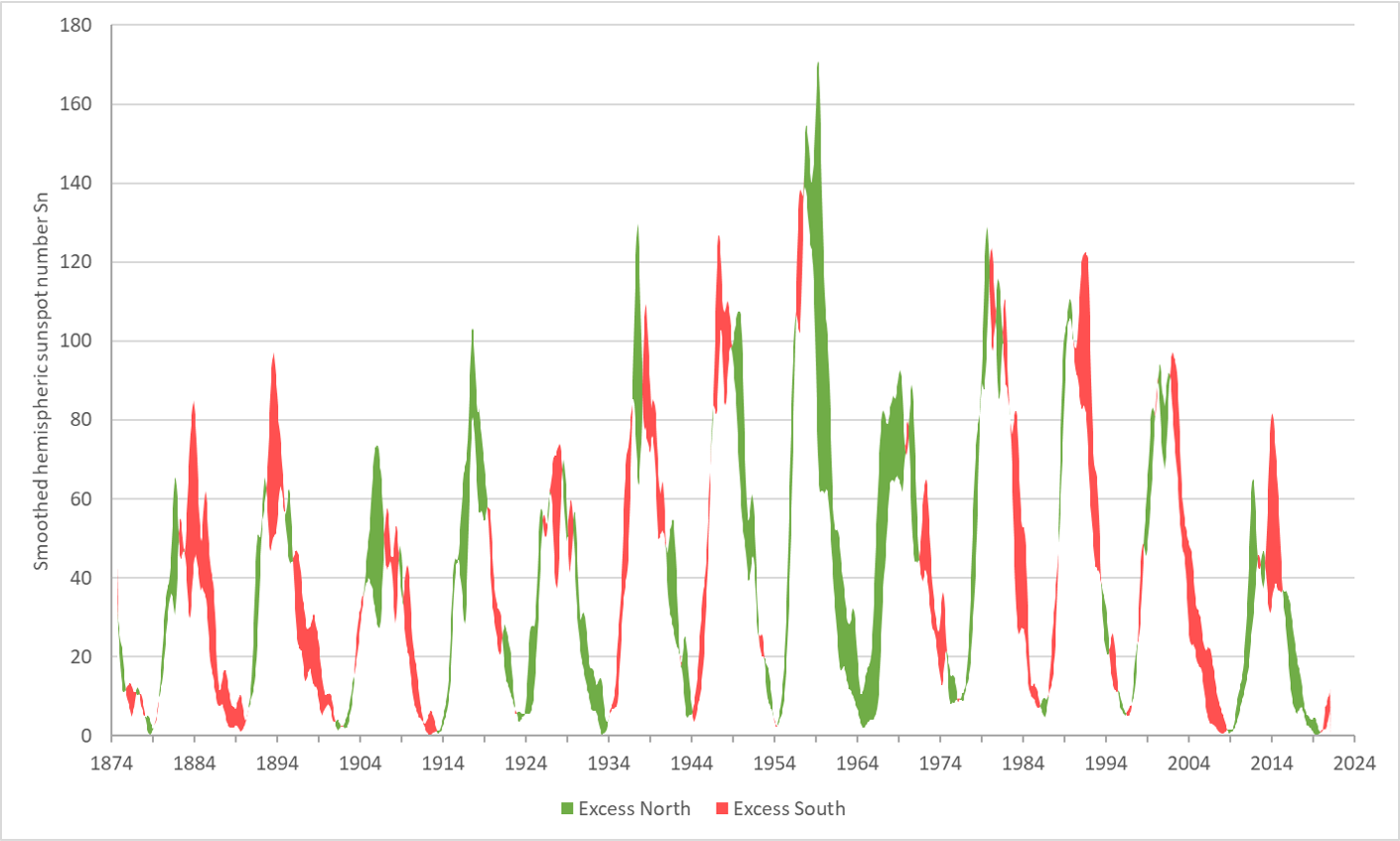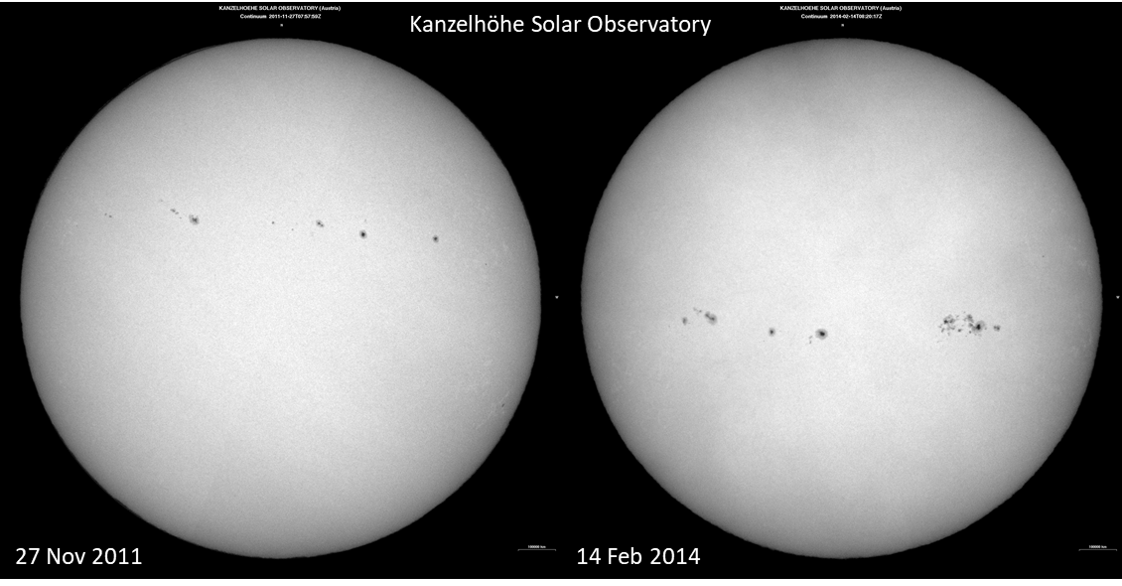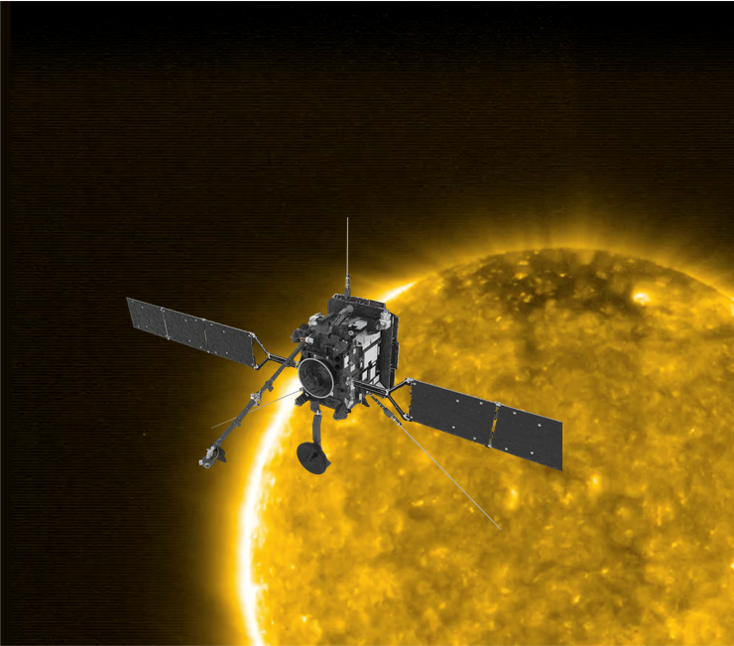During the past summer holidays, a research article has been published that resulted from a close collaboration between SILSO, the University of Graz (Austria) and the Skolkovo Institute of Science and Technology (Moscow, Russia). The paper establishes the official sunspot numbers for both solar hemispheres extending it all the way back to 1874. Previously, these existed only for the last 3 solar cycles, starting in 1992 (see the data at the SILSO website). The newly extended hemispheric sunspot numbers series are based on the sunspot areas listed in the Greenwich photographic catalogue, and are calibrated on the existing SILSO reference hemispheric database.
The graph underneath shows the hemispheric sunspot numbers from 1874-present based on the data from the article, and available at a dedicated SILSO webpage. Colors indicate which solar hemisphere is dominating: "green" for the northern hemisphere, and "red" for the southern one. For example, the green color between 1958 and 1970 clearly showed a strong domination of the northern solar hemisphere over the southern one. Currently (2021), the southern hemisphere is slightly dominating.

Other conclusions from the paper were that the strongest asymmetry occured for solar cycle 19 (SC19 - 1954-1964), in which the northern hemisphere showed a cumulated predominance of 42 percent. The phase shift between the peaks of solar activity in the two hemispheres may be up to 28 months, with a mean absolute value over cycles 12–24 of 16.8 months. The phase shifts reveal an overall asymmetry of the northern hemisphere reaching its cycle maximum earlier (in 10 out of 13 cases), with a mean signed phase shift of -7.6 months (i.e. earlier). It is believed that this new catalogue will be essential to accurately predict space weather since now the scientific community has continuous hemispheric data for a longer period to make meaningful solar cycle predictions. Indeed, we currently still do not fully understand how the solar dynamo, which is thought to be the source of the solar magnetic cycle, works and how the solar magnetic field is generated.
As study co-author and the head of the World Data Center SILSO Frédéric Clette commented: "For permanent technical infrastructures, for long-term issues like ozone depletion or climate, and in view of future long-duration manned space missions to the Moon or Mars, there is a growing need for mid- and long-term forecasts of the trend of solar activity over the next few months or years. As part of an emerging discipline called 'space climate', such long-term predictions of the strength of the solar cycle can only rest on a detailed knowledge of the actual evolution of many past solar cycles. Our newly extended data series is one of the key steps in the growing efforts to revisit and fully exploit legacy data collections using the modern tools of the 21st century."

Moreover, the space weather community will soon get help from the Solar Orbiter, a groundbreaking space mission launched in February last year to fly very close to the Sun. It will perform gravitational maneuvers to reach out of the ecliptic and glimpse at the poles for the first time in history. The first polar pass is expected to take place in March 2025 with the spacecraft reaching an inclination of 17 degrees above the ecliptic plane and increasing to 33 degrees in July 2029. Solar Orbiter will have a much better view of the solar poles than is possible from Earth, and so it will provide solar physicists with much needed insight on what's happening with the polar magnetic fields, believed by many scholars to be a key-ingredient for the solar dynamo performance. It is believed that the newly developed product of hemispheric sunspot numbers together with the unprecedented observations and fundamentally new knowledge from the Solar Orbiter will help the scientific community to advance solar cycle studies and space weather predictions.

More information is available in a special newsitem at the SILSO website at https://www.sidc.be/silso/node/172 The source paper reference is: Astrid M. Veronig, Shantanu Jain, Tatiana Podladchikova, Werner Poetzi, Frederic Clette, 2021. Hemispheric Sunspot Numbers 1874-2020, Astronomy & Astrophysics, 652, A56, DOI: https://doi.org/10.1051/0004-6361/202141195





